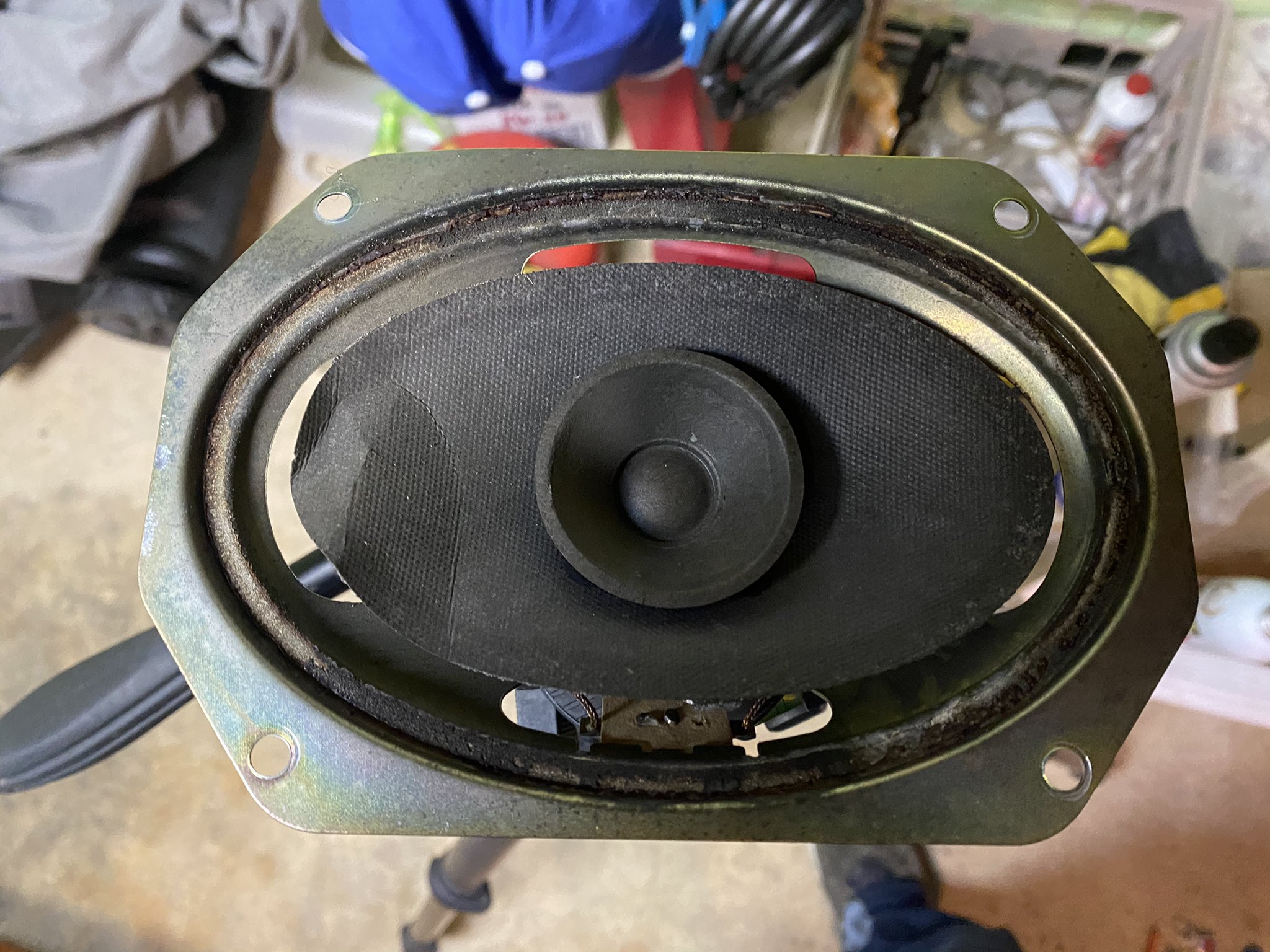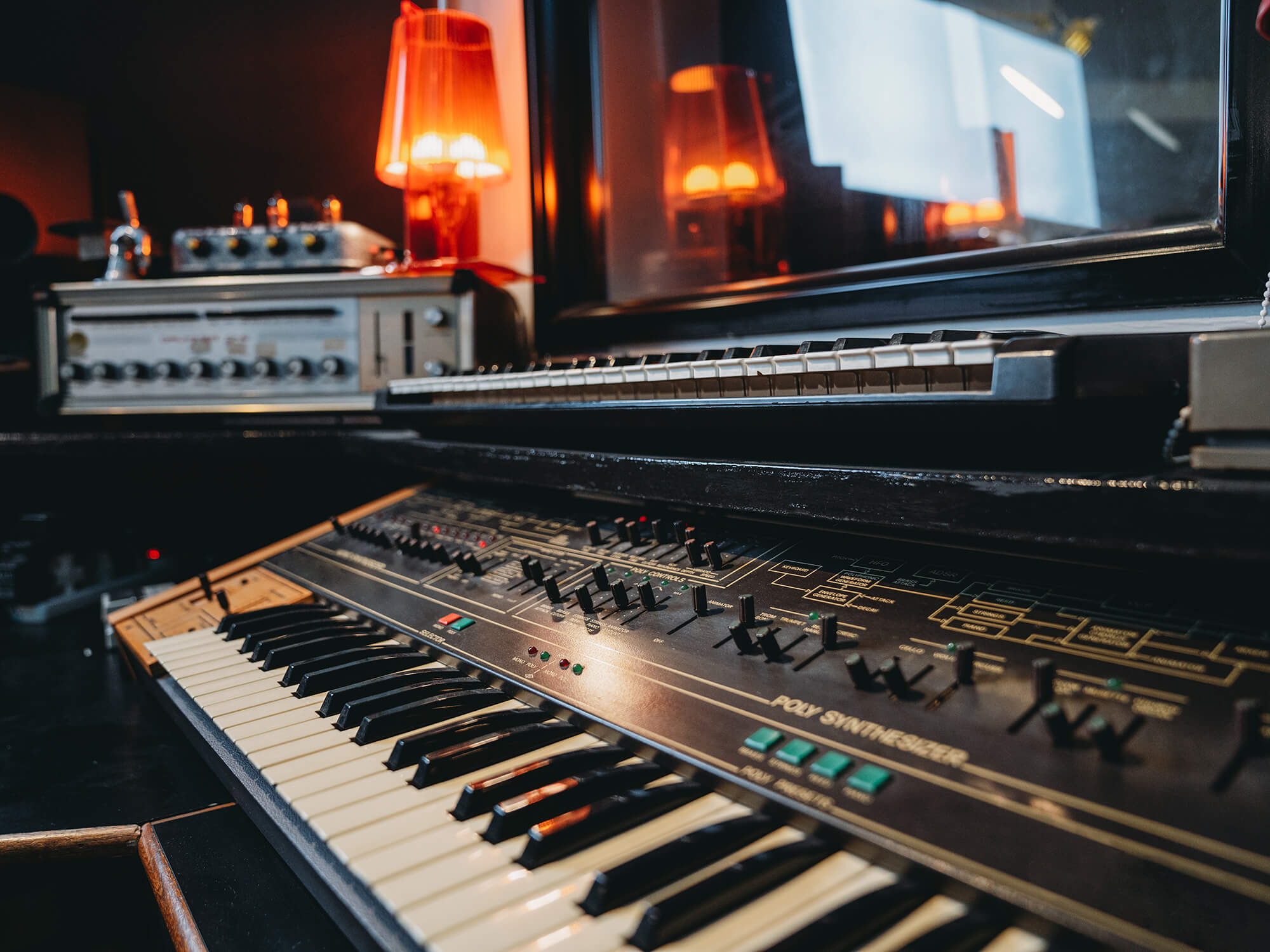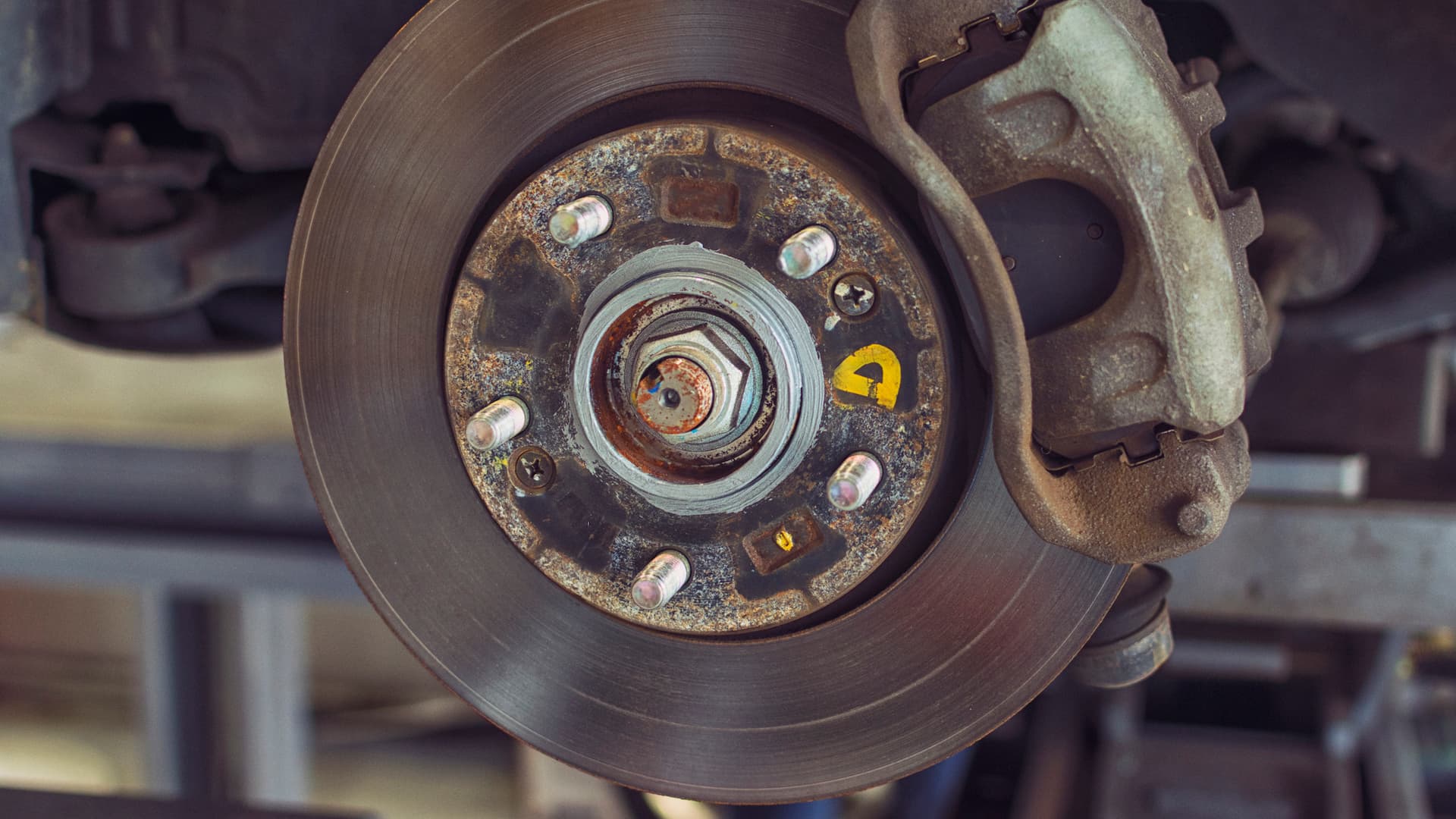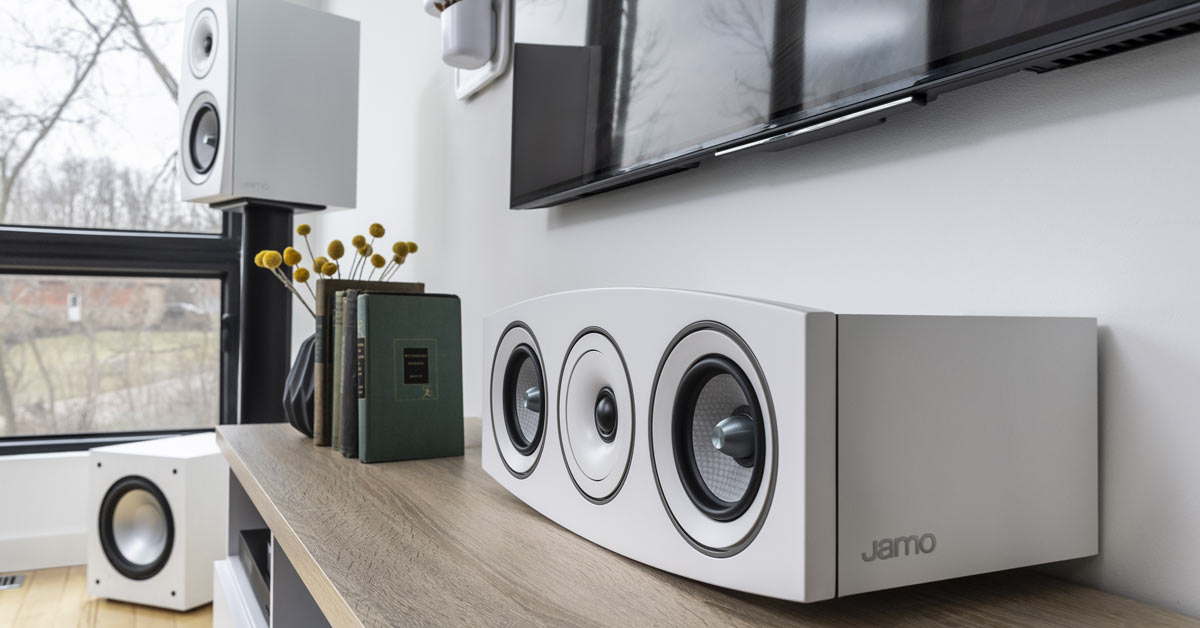Home>Production & Technology>Sound>What Does A Blown Speaker Sound Like


Sound
What Does A Blown Speaker Sound Like
Modified: January 22, 2024
Discover what a blown speaker sounds like and how to identify the signs. Learn how sound quality is affected and what to do to fix it.
(Many of the links in this article redirect to a specific reviewed product. Your purchase of these products through affiliate links helps to generate commission for AudioLover.com, at no extra cost. Learn more)
Table of Contents
- Introduction
- Common Signs of a Blown Speaker
- Distorted Audio
- Rattling or Buzzing Sounds
- Lack of Bass
- Uneven or Muffled Sound
- Popping or Crackling Noises
- Causes of a Blown Speaker
- Overpowering the Speaker
- Incorrect Speaker Wiring
- Physical Damage to the Speaker
- Age and Wear
- How to Fix a Blown Speaker
- Testing the Speaker
- Repairing or Replacing the Speaker
- Conclusion
Introduction
Speakers are an essential component of any audio system, be it in your car, home theater, or portable devices. They help us enjoy our favorite music, movies, and podcasts by converting electrical signals into sound waves. However, like any electronic device, speakers are prone to wear and tear.
In the course of their lifetime, speakers can experience a variety of issues, and one of the most common problems is a blown speaker. A blown speaker can significantly impact the audio quality, causing distortions, rattling sounds, or even a complete lack of sound. Understanding the signs of a blown speaker is essential for diagnosing and resolving the issue.
In this article, we will explore the common signs of a blown speaker, the possible causes behind it, and the steps you can take to fix or replace a blown speaker. Whether you’re an audiophile or a casual listener, this knowledge will help you effectively troubleshoot and maintain your speakers for optimal performance.
Common Signs of a Blown Speaker
A blown speaker can exhibit a range of symptoms that indicate a malfunction or damage. Recognizing these signs can help you identify if your speaker is blown and take appropriate action. Here are some common signs of a blown speaker:
- Distorted Audio: One of the most noticeable signs of a blown speaker is distorted sound. You may hear crackling, muffled, or fuzzy audio that disrupts the clarity and quality of the sound.
- Rattling or Buzzing Sounds: A blown speaker may produce rattling or buzzing noises, especially at higher volume levels. This can be a result of loose components or damaged speaker cones.
- Lack of Bass: If the bass sounds weak or non-existent, it could indicate a blown speaker. The low-frequency response may be compromised due to a damaged subwoofer or speaker cone.
- Uneven or Muffled Sound: A blown speaker can cause uneven sound distribution or a muffled audio output. It may sound like certain frequencies are missing, resulting in an imbalanced listening experience.
- Popping or Crackling Noises: If you hear popping or crackling sounds when playing audio through your speakers, it could be a sign of a blown speaker. This may occur when the voice coil or other internal components are damaged.
It’s important to note that these signs can vary depending on the severity and type of damage to the speaker. If you experience any of these symptoms, it’s recommended to further investigate the issue to determine if it is indeed a blown speaker or another problem with your audio system.
Distorted Audio
Distorted audio is one of the most common signs of a blown speaker. When a speaker is blown, the sound produced may be characterized by various distortions that significantly impact the listening experience.
One of the primary forms of audio distortion is crackling or popping noises. These sounds can occur intermittently or consistently while audio is playing. They are often caused by damaged speaker components, such as a torn or detached speaker cone, a loose voice coil, or a damaged amplifier.
Another form of audio distortion is muffled or fuzzy sound. With a blown speaker, you might notice that certain frequencies are missing or sound unclear. This can make it challenging to enjoy music, movies, or any audio content that heavily relies on a balanced and accurate sound reproduction.
Additionally, a blown speaker may produce buzzing or vibrating sounds. This can happen when the speaker cone becomes loose or damaged, causing unwanted vibrations that distort the audio output.
It’s important to remember that distorted audio doesn’t automatically indicate a blown speaker. Other factors, such as poor audio source quality, incorrect equalizer settings, or issues with the audio player or amplifier, can also cause audio distortion. Therefore, it’s crucial to troubleshoot and isolate the problem by testing different audio sources and speakers.
If you consistently experience distorted audio across multiple audio sources or speakers, it’s likely that you have a blown speaker. In such cases, it’s recommended to either repair or replace the speaker to restore optimal sound quality.
Rattling or Buzzing Sounds
Another common sign of a blown speaker is the presence of rattling or buzzing sounds. These noises can be quite noticeable and can significantly affect the audio experience.
When a speaker is blown, it can result in loose or damaged components. This can cause the speaker cone or other internal parts to vibrate in an abnormal manner, resulting in rattling or buzzing noises.
The rattling sound is often more prominent at higher volume levels or when certain frequencies are being played. It can be particularly noticeable during bass-heavy passages or when there are sudden changes in sound intensity.
In some cases, the cause of the rattling or buzzing sound may be external rather than internal to the speaker. Loose wires or objects coming into contact with the speaker can also create similar noises. It is important to carefully inspect the speaker and the surrounding area to rule out any external factors contributing to the issue.
If the rattling or buzzing sounds persist even after checking for external causes, it is likely that it is a result of a blown speaker.
To confirm whether the speaker is indeed the source of the rattling or buzzing sounds, you can perform a simple test. Gently press on the speaker cone while audio is playing. If the rattling or buzzing noises change or disappear when pressure is applied, it indicates that the speaker itself is the cause.
Once a blown speaker is identified as the source of the rattling or buzzing sounds, it is advisable to seek professional repair or consider replacing the speaker to restore optimal sound quality and prevent further damage.
Lack of Bass
One of the telltale signs of a blown speaker is the lack of bass response. If your speaker is not producing the deep, low-frequency sounds that it used to, it could be an indicator of a problem.
Bass is an integral part of the audio listening experience, adding richness and depth to the sound. A blown speaker can compromise the ability to reproduce low-frequency sounds accurately, resulting in a noticeable reduction in bass output.
There are several reasons why a blown speaker may lead to a lack of bass. One common cause is a damaged subwoofer cone or voice coil. The subwoofer is responsible for producing the lowest frequencies in the audio spectrum, and any damage to its components can hinder its performance.
Another possibility is a compromised seal or enclosure. If the speaker enclosure is not properly sealed or there are leaks, it can affect the overall bass response. The air pressure created within the enclosure is essential for generating deep bass, and any leaks or improper sealing can result in an insufficient bass output.
It’s worth noting that a lack of bass can also be attributed to other factors like EQ settings, audio source quality, or room acoustics. Therefore, it’s essential to rule out these possibilities before determining that a blown speaker is the cause.
If you suspect that a blown speaker is responsible for the lack of bass, you can try connecting the speaker to a different audio system or source. If the issue persists across multiple setups, it’s likely that the speaker itself is the problem.
To address the lack of bass caused by a blown speaker, you have the option to repair or replace the speaker. If the damage is minor, such as a torn cone or a loose wire, a professional repair might be a viable solution. However, if the speaker is severely damaged or outdated, it may be more practical to invest in a new speaker to restore the desired bass response.
Uneven or Muffled Sound
Another common sign of a blown speaker is experiencing uneven or muffled sound output. If the audio from your speaker sounds imbalanced or lacks clarity, it could indicate a problem with the speaker.
Uneven sound refers to a situation where certain frequencies or channels are disproportionately louder or quieter than others. This can give the impression of an imbalanced audio mix, making it challenging to enjoy music or other audio content as intended.
Muffled sound, on the other hand, refers to a loss of clarity and definition in the audio output. It can make the sound seem dull or distant, with an overall reduction in perceived detail and sharpness.
These issues typically occur when there is damage to the speaker’s internal components, such as the voice coil, crossover network, or speaker cone. A blown speaker can lose its ability to accurately reproduce certain frequencies or channels, resulting in an imbalanced or muffled audio experience.
It is important to note that uneven or muffled sound can be caused by factors other than a blown speaker. Issues with audio settings on the source device or amplifier, room acoustics, or poor audio quality of the source itself can also lead to similar symptoms. Therefore, it is recommended to test the speaker with different audio sources and settings to isolate the problem.
If you consistently experience uneven or muffled sound across various audio sources and settings, it is likely that the speaker is the culprit. In such cases, you may consider either repairing the speaker if the damage is minor, or replacing it to restore balanced and clear sound reproduction.
Popping or Crackling Noises
Popping or crackling noises are a common indication of a blown speaker. If you hear these sounds coming from your speaker, it is a clear sign that something is not right with its functionality.
These noises can manifest as sudden bursts, intermittent pops, or continuous crackling sounds. They can be particularly noticeable during quiet passages or transitions between audio tracks.
The cause of popping or crackling noises in a speaker can vary, but it often points to damage within the speaker’s components. For instance, a damaged voice coil can create electrical interference, resulting in popping or crackling sounds. Similarly, a torn or detached speaker cone can cause erratic vibrations, leading to popping noises.
In some cases, the issue may lie with the amplifier or audio source rather than the speaker itself. Incorrect wiring, faulty cables, or problems with the audio player or amplifier can also produce popping or crackling sounds. Therefore, it is important to verify that the issue is indeed with the speaker before taking any further action.
An effective way to confirm if the speaker is responsible for the popping or crackling noises is to test it with different audio sources and cables. If the issue persists, it is highly likely that the speaker is the source of the problem.
Once you have identified a blown speaker as the cause of the popping or crackling noises, it is advisable to seek professional repair or consider replacing the speaker. Professional technicians can diagnose the exact issue and recommend the best course of action to restore the speaker’s functionality and prevent further damage.
Causes of a Blown Speaker
A blown speaker can result from various factors, ranging from improper usage to physical damage. Understanding the causes can help you prevent or address potential issues before they lead to speaker damage. Here are some common causes of a blown speaker:
- Overpowering the Speaker: Using an amplifier or audio system that exceeds the speaker’s recommended power handling capabilities is a common cause of a blown speaker. Pushing the speaker beyond its limits can cause the voice coil to overheat and eventually fail.
- Incorrect Speaker Wiring: Improper wiring, such as using the wrong gauge of wire or mismatched impedance, can put undue stress on the speaker and cause damage to its components. It’s crucial to follow the manufacturer’s guidelines for proper wiring.
- Physical Damage to the Speaker: Accidental impacts, drops, or exposure to moisture can lead to physical damage to the speaker’s cone, voice coil, or other internal components. Physical damage can impair the speaker’s performance and eventually result in a blown speaker.
- Age and Wear: Like any mechanical device, speakers experience wear and tear over time. As speakers age, the components can deteriorate, leading to a decreased ability to handle power or reproduce sound accurately. This can increase the risk of a blown speaker.
It’s important to note that these causes can interact with one another, exacerbating the chances of a blown speaker. For example, using an overpowering amplifier with incorrect wiring can significantly increase the stress on the speaker, accelerating wear and tear.
To prevent a blown speaker, it is advisable to adhere to the manufacturer’s recommendations for power handling, proper wiring, and safe usage. Additionally, regular maintenance and inspection of the speaker can help identify any potential issues before they escalate into major problems.
If you suspect a blown speaker, it’s crucial to assess the cause of the damage. Identifying and addressing the underlying cause can prevent future instances of blown speakers and prolong the lifespan of your audio equipment.
Overpowering the Speaker
One of the leading causes of a blown speaker is overpowering it with excessive wattage or volume. When a speaker is subject to more power than it can handle, it can result in irreversible damage to its components.
Every speaker has a designated power handling capacity, specified by the manufacturer. This power handling rating indicates the maximum amount of power the speaker can safely handle without risking damage. Exceeding this limit can cause the voice coil to overheat and eventually fail, leading to a blown speaker.
Overpowering the speaker often occurs when pairing it with an amplifier that delivers more wattage than the speaker’s rating. This can happen when upgrading to a more powerful amplifier without considering the compatibility with the existing speakers.
Additionally, pushing the volume levels to the maximum for an extended period can also overpower the speaker. Continuously playing music or audio at high volumes causes the speaker to work harder and generate more heat, which can lead to overheating and eventual damage.
To prevent overpowering the speaker and potential damage, it’s crucial to match the power ratings of the speakers and amplifiers properly. Ensure that the amplifier’s output power matches or is lower than the speaker’s power handling capacity to avoid exceeding the speaker’s limits.
If you’re unsure about the power requirements of your speakers, consult the manufacturer’s specifications or seek advice from audio professionals. They can guide you in selecting the appropriate amplifier and help you avoid the risk of overpowering your speakers.
By properly matching the power capabilities of your speakers and amplifiers, you can ensure optimal performance and prolong the lifespan of your speakers, reducing the chances of experiencing a blown speaker.
Incorrect Speaker Wiring
Incorrect speaker wiring is another common cause of a blown speaker. Improper wiring can put undue stress on the speaker and lead to damage or malfunction of its internal components.
There are several ways in which speaker wiring can be done incorrectly:
- Incorrect Gauge of Wire: Using wire that is too thin or too thick for the speaker’s power requirements can affect the flow of electrical current. Thin wires can increase resistance, causing the speaker to receive insufficient power and potential overheating. Thick wires, on the other hand, can overload the speaker with excess power.
- Mismatched Impedance: Impedance refers to the electrical resistance of the speaker. Mismatched impedance, such as connecting a speaker with a lower impedance to an amplifier that is designed for a higher impedance, can cause excessive heat and strain on the speaker’s components.
- Incorrect Phase: In multi-speaker setups, ensuring that all speakers are in the correct phase is essential. If speakers of opposite phases (positive and negative) are connected, they can cancel out each other’s sound waves, leading to poor audio quality and potential damage.
To avoid incorrect speaker wiring, it is crucial to follow the manufacturer’s guidelines and recommendations. These guidelines typically include suggestions for the appropriate wire gauge, impedance matching, and phase alignment.
If you are unsure about the correct wiring for your speakers, consulting documentation, contacting the manufacturer, or seeking assistance from an audio professional can help ensure the proper wiring setup.
Regularly inspecting and maintaining speaker wiring connections can also prevent issues caused by loose or damaged wires. Check for any frayed or damaged wires and ensure all connections are secure and properly fastened.
By ensuring correct speaker wiring, you can prevent unnecessary strain on the speakers and minimize the risk of a blown speaker, allowing for optimal audio performance and longevity of your speakers.
Physical Damage to the Speaker
Physical damage to the speaker can lead to a blown speaker and compromise its overall performance. Accidental impacts, drops, exposure to moisture, or other mishaps can cause harm and disrupt the delicate components of the speaker.
One common form of physical damage is damage to the speaker cone. The cone, often made of materials like paper, polypropylene, or kevlar, is responsible for producing sound waves. If the cone becomes torn, punctured, or dented, it can distort the sound output and affect the speaker’s overall functionality.
In addition to the cone, other components of the speaker can also suffer physical damage. The voice coil, which is responsible for moving the speaker cone and producing sound, can be damaged if the speaker experiences a strong impact or if foreign objects come into contact with it.
Exposure to moisture can also damage the speaker, particularly in outdoor or humid environments. Moisture can cause corrosion, rust, or warping of the speaker components, leading to reduced performance or even complete failure.
To prevent physical damage to the speaker, it’s important to handle and store the speakers with care. Avoid dropping or subjecting the speakers to strong impacts, and keep them away from sources of water or excessive humidity.
If physical damage occurs, it’s advisable to have the speaker inspected by a professional technician. They can assess the extent of the damage and determine the best course of action, whether it involves repairing or replacing the damaged components.
Regularly inspecting the speakers for any signs of physical damage, such as dents, tears, or water-related issues, can enable early detection and timely intervention. By addressing physical damage promptly, you can prevent further deterioration and ensure the speaker’s longevity and optimal performance.
Age and Wear
Age and wear are inevitable factors that can contribute to a blown speaker over time. As speakers age, their components naturally wear down, leading to a decline in performance and an increased risk of failure.
One of the main effects of age on a speaker is the deterioration of its materials. Speaker cones, surrounds, voice coils, and other internal components can become less flexible or lose their structural integrity. This can result in decreased responsiveness, reduced power handling, and compromised sound quality.
Wear and tear can also affect the speaker’s ability to dissipate heat effectively. Over time, heat generated by the voice coil can cause damage if not dissipated properly. Consequently, prolonged use or high volume levels can push an aging speaker beyond its limits, resulting in a blown speaker.
Additionally, exposure to dust, dirt, and other environmental factors can accumulate over time, affecting the speaker’s performance. Dust and debris can clog the speaker’s components, impeding their movement and causing strain on the speaker’s motor structure.
Regular maintenance and cleaning can help mitigate the effects of age and wear on a speaker. This includes inspecting the speaker for any signs of damage, cleaning dust and debris from the components, and addressing any necessary repairs promptly.
However, it’s important to recognize that even with proper maintenance, speakers have a finite lifespan. As they age, the risk of encountering a blown speaker increases. If a speaker is exhibiting signs of wear, such as reduced sound quality, distortion, or other issues, it may be time to consider replacing the speaker for optimal performance.
By taking into account the age and wear of your speakers, you can ensure proactive maintenance and make informed decisions about when it may be necessary to replace them to avoid the inconvenience and disappointment of a blown speaker.
How to Fix a Blown Speaker
Discovering that you have a blown speaker can be disappointing, but the good news is that there are steps you can take to address the issue. Here are some options for fixing a blown speaker:
1. Testing the Speaker: Before proceeding with any repairs or replacements, it’s important to confirm that the speaker is indeed blown. Test the speaker with different audio sources and cables to ensure that the issue is not caused by other factors like faulty wiring or audio equipment.
2. Repairing or Replacing the Speaker: The appropriate course of action depends on the extent of the damage and your level of expertise. If you have the necessary knowledge and skills, you may opt to repair the speaker yourself. This can involve replacing damaged components, such as the voice coil or cone, or fixing loose connections. However, if you are unsure or uncomfortable with DIY repairs, it is recommended to seek professional help. Professional technicians can diagnose the problem accurately and perform the necessary repairs. In some cases, depending on the severity of the damage or the age of the speaker, it may be more cost-effective to replace the speaker entirely.
3. Upgrading and Preventive Measures: If you decide to replace the speaker, consider upgrading to a higher quality or more durable model. Doing so can improve the overall sound performance and potentially provide better longevity. Additionally, taking preventive measures can minimize the risk of experiencing another blown speaker. These measures include proper power management, correct speaker placement, regular maintenance, and following manufacturer guidelines for usage and maintenance.
4. Seeking Professional Assistance: If you are unsure about how to proceed or if the damage appears severe, it’s highly recommended to seek professional assistance. An experienced audio technician can provide expert advice, repair the speaker, or guide you in selecting a suitable replacement.
Remember, fixing a blown speaker may require technical expertise and specialized tools. It’s important to assess your own skills and comfort level when deciding whether to tackle the repairs yourself.
By taking appropriate steps to fix a blown speaker, whether through repair or replacement, you can restore optimal audio performance and continue to enjoy your favorite music and media for years to come.
Testing the Speaker
Before proceeding with any repairs or replacements, it’s important to conduct thorough testing to confirm that the speaker is indeed blown. This step helps ensure that the issue is not caused by external factors or faulty connections. Here are some steps to effectively test the speaker:
1. Check the Speaker Connections: Begin by inspecting the speaker connections. Ensure that the speaker wires are securely connected to both the speaker terminals and the audio source or amplifier. Loose or faulty connections can cause audio issues that may mimic the symptoms of a blown speaker.
2. Try Different Audio Sources and Cables: Connect the speaker to different audio sources such as a different device, computer, or mobile phone. Test the speaker with various cables as well, including different audio cables and connectors. If the issue persists across different sources and cables, it is more likely that the speaker itself is the problem.
3. Listen for Distortions and Irregularities: Play a variety of audio content through the speaker and carefully listen for any distortions, crackling, buzzing, or uneven sound. Pay attention to changes in volume levels and any inconsistencies across the frequency range. These irregularities are indicative of a blown speaker.
4. Inspect the Physical Condition: Conduct a thorough visual inspection of the speaker. Look for any visible damage, such as tears or punctures in the cone, loose or detached components, or signs of moisture damage. Physical damage can directly impact the speaker’s performance and suggest a blown speaker.
5. Press Test: Perform a press test to further verify the condition of the speaker. Gently press on the speaker cone while audio is playing. If the sound improves, changes, or returns to normal when pressure is applied, it is an indication that the speaker may be damaged and requires attention.
By meticulously testing the speaker using these methods, you can confidently determine whether the speaker is indeed blown. Recognizing the signs of a blown speaker will guide you in making the right decisions regarding repairs or replacements, helping you restore optimal sound quality and prolong the lifespan of your audio equipment.
Repairing or Replacing the Speaker
Once you have confirmed that your speaker is indeed blown, you have two main options: repairing or replacing the speaker. The choice between the two depends on the severity of the damage, your technical expertise, and the cost-effectiveness of each option.
1. Repairing the Speaker: If you have the necessary knowledge and skills, you may choose to repair the speaker yourself. Repairing a blown speaker can involve a range of tasks, depending on the type and extent of the damage. Common repair tasks include replacing damaged components such as the voice coil, cone, or crossover network, fixing loose connections, or refoaming the speaker surrounds. DIY repairs can be cost-effective and rewarding for those with technical proficiency, but it’s important to ensure that you have the expertise and proper tools to carry out the repair effectively.
2. Seeking Professional Repair Services: If you are not confident in your ability to repair the speaker yourself, or if the damage is more extensive, it is advisable to seek professional repair services. Professional technicians have the knowledge, experience, and specialized tools to diagnose and fix the issue effectively. They can accurately identify the specific problem, source the necessary replacement parts, and ensure that the repair is performed correctly. While professional repairs may come at a cost, they can be a worthwhile investment to restore the speaker’s performance and prolong its lifespan.
3. Replacing the Speaker: In some cases, particularly if the speaker is severely damaged, outdated, or the cost of repairs is high, it may be more practical to replace the speaker entirely. This can provide an opportunity to upgrade to a newer, higher-quality model that suits your audio needs and preferences. When considering a replacement, ensure that you select a speaker that is compatible with your existing audio system and matches your desired sound profile.
The decision to repair or replace a blown speaker involves weighing factors such as the extent of damage, the cost of repairs, the availability of replacement parts, and personal preferences. It’s important to make an informed decision based on your specific circumstances and the long-term value you seek from your audio equipment.
Remember, regardless of whether you choose to repair or replace the speaker, implementing preventive measures such as proper power management, regular maintenance, and following manufacturer guidelines can help prolong the lifespan of your speakers and minimize the risk of experiencing future blown speakers.
Conclusion
Understanding the signs of a blown speaker and knowing how to address the issue is essential for anyone who values high-quality audio reproduction. By recognizing the common signs of a blown speaker, such as distorted audio, rattling sounds, lack of bass, uneven sound, or popping noises, you can quickly identify when there is a problem with your speakers.
Causes of a blown speaker can range from overpowering the speaker and incorrect wiring to physical damage and the effects of age and wear. Taking preventive measures and practicing proper maintenance can significantly reduce the risk of encountering a blown speaker.
When faced with a blown speaker, testing it thoroughly is crucial to confirm the issue and eliminate other potential causes. From there, you can decide whether to repair the speaker by yourself or seek professional repair services. Alternatively, if the damage is extensive or the speaker is outdated, replacing the speaker may be the best option.
Ultimately, the goal is to restore the optimal sound quality and performance of your audio system. Whether you choose to repair or replace the speaker, remember to follow manufacturer guidelines, properly match power requirements and wiring, and implement preventive measures to safeguard the longevity and integrity of your speakers.
By staying proactive and knowledgeable about how to handle blown speakers, you can continue to enjoy your favorite music, movies, and audio content with the immersive and high-fidelity experience they deserve.
Remember, if you ever feel uncertain or overwhelmed, don’t hesitate to consult audio professionals who can provide guidance and expertise in resolving issues related to blown speakers.











